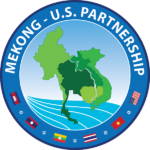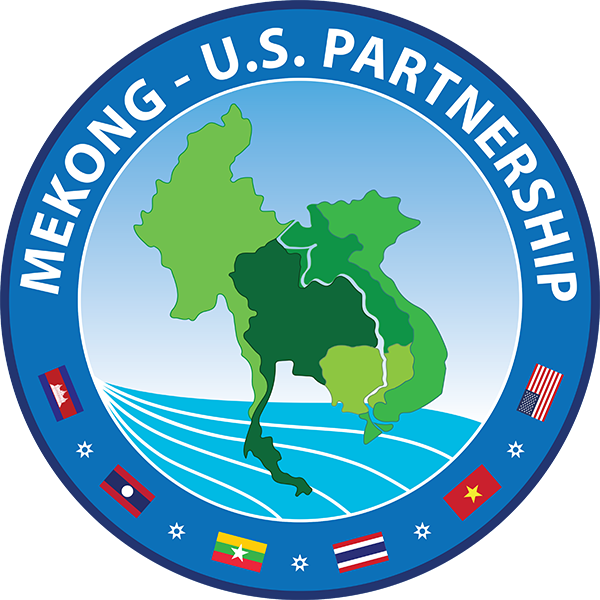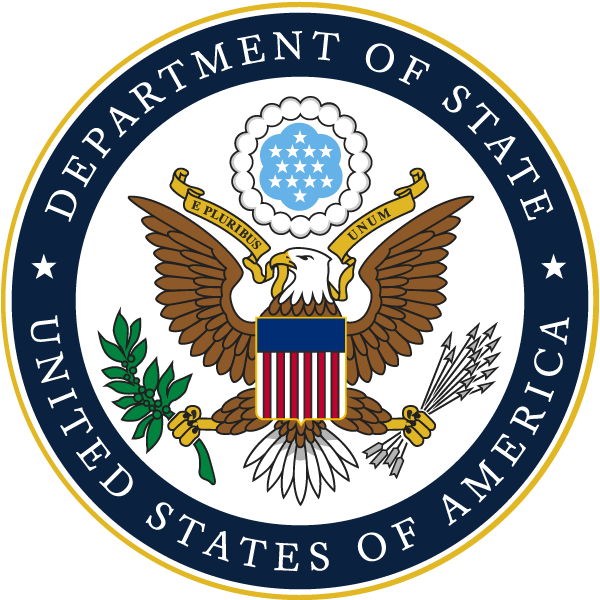January 12, 2021
Thank you Assistant Minister Nguyen Van Thao and Vietnam for co-chairing this first Policy Dialogue under the new Mekong-U.S. Partnership and Friends of the Mekong. And allow me to wish everyone a happy new year!
As ASEAN Chair last year, Vietnam did a remarkable job under challenging circumstances. Vietnam created an ambitious ASEAN agenda, setting high standards for ASEAN openness and inclusivity, including women’s empowerment, despite all the challenges from COVID-19.
Vietnam also championed the Mekong in ASEAN, highlighting the importance of this region to ASEAN centrality and prosperity and to the ASEAN Outlook on the Indo-Pacific.
The U.S. Commitment to the Mekong
The United States shares this commitment to the Mekong. In September, foreign ministers from Mekong-region countries and the U.S. Deputy Secretary of State, along with the ASEAN Secretary-General, joined together to launch the Mekong-U.S. Partnership. Building on more than a decade of cooperation and $3.5 billion in U.S. assistance under the Lower Mekong Initiative and more than $1 billion in U.S. financing for ASEAN-wide infrastructure, we pledged to deepen and broaden our relations, focusing on critical issues like economic connectivity and infrastructure, human resource development, natural resources, and non-traditional security, including transnational crime, disaster preparedness, and health security.
Now we come together to continue the hard but rewarding work of our strengthened partnership with all of you, the Friends of the Mekong. This dialogue will help hone our shared priorities and focus our work to achieve them.
Supporting an Inclusive Policy Dialogue
I want to commend Assistant Minister Thao and Vietnam for broadening participation at this Dialogue. I want to extend a special welcome to our friends from Brunei, observing in its capacity as ASEAN Chair. I also want to recognize our colleagues from India joining this discussion. India is a friend of the Mekong through its Mekong-Ganga Cooperation and a key partner that shares our values of transparency and respect for sovereignty. And of course, we are glad to see our friends from The Mekong River Commission. The Commission, as you know, is the only treaty-based resource governance organization in the Mekong, a longtime partner of all of us, and best suited to ensure the sustainability of the mighty Mekong. We also look forward to hearing ideas from the private sector, from academia, and from civil society, in addition to ideas from member governments.
We welcome all of you to this Dialogue and thank you for your commitment to the Mekong region and its security and economic growth. As Secretary Pompeo said upon the launch of the Partnership, Mekong countries deserve good partners.
Let me take just a few minutes to describe how the United States can help address some key challenges.
U.S. Programming in the Mekong
On Natural Resources Management:
- We would like to continue advancing transparency of essential water data. Through the Mekong Water Data Initiative, we stand ready to assist Mekong countries with tools to monitor and manage the Mekong River. For example, we were happy to support the launch of the Mekong Dam Monitor last month. For the first time, the Mekong River Commission and all residents of Mekong-region countries have access to transparent data on the impacts of mainstream dams across the upper and lower portions of the Mekong River. We saw the impact of the Monitor last week when it detected a one-meter drop in downstream water levels due to restrictions in China, which prompted China—five days later—to notify its neighbors. Transparency is powerful.
- We want to identify common goals to combat crimes that threaten natural resources, like illegal logging and mining, wildlife trafficking, and illegal, unreported, and unregulated (IUU) fishing.
- We are interested in engaging with Mekong-region countries on environmental protection concerns, including species extinction, sustainable conservation and management of natural resources, micro-plastics, climate change, and water quality.
- We would also like to continue our efforts with Friends of the Mekong to exchange best practices for the use of remote sensing techniques and develop human capital to improve the quality and availability of essential water data, to predict and mitigate the impacts of floods and droughts, and to foster science-based decision-making in transboundary water governance.
- South Korea and the United States are monitoring real-time water resource changes and are enhancing safety from disasters through systematic water resources management by combining K-water’s water management capabilities in South Korea with the satellite utilization and water resources analysis capabilities of NASA and the U.S. Army Corps of Engineers.
- The recently announced Mekong Australia Partnership, with its commitment of more than 230 million Australian dollars, is an also an exciting opportunity to closely coordinate on a range of issues.
On Economic Connectivity and Infrastructure:
- We think a focus on sustainable and quality infrastructure and east-west connectivity should be a priority for the Friends of the Mekong.
- We are developing an action plan that establishes specific goals, project areas, and technical cooperation under the Japan-U.S. Mekong Power Partnership (JUMPP) and welcome coordination with other Friends who have similar power development projects.
- We welcome more cooperation with all of you on smart cities and are happy to share more details on the 20 projects under our U.S.-ASEAN Smart Cities Partnership.
- And we will continue to work with the U.S. International Development Finance Corporation, U.S. Trade and Development Agency, the Export-Import Bank of the United States, and Department of Commerce to identify ways that the United States can facilitate high-quality investment and private sector engagement. Many of these agencies are working with your finance and trade institutions to expand economic growth in the Mekong.
On Non-Traditional Security issues:
- We’re working to improve the region’s response to the COVID-19 pandemic and to prepare for the next pandemic. Over the last 20 years, the United States has invested over $3.5 billion in supporting public health in ASEAN countries, and we plan to maintain this support through the U.S.-ASEAN Health Futures initiative.
- We want to share ideas on how to work together to combat the threat of transnational criminal networks. These networks traffic in people, narcotics, wildlife, timber, and weapons. These crimes are a threat not only to the Mekong, but to the broader Indo-Pacific and the world. We welcome Australia’s substantial efforts to combat transnational crime and trafficking in the Mekong region and we will continue to coordinate closely with Canberra on this shared priority.
Finally, on Human Resources Development:
- We plan to discuss digital education opportunities and Mekong-region countries’ goals to further develop their skilled labor forces. Our Billion Futures initiative, the Young Southeast Asian Leaders Initiative, and other programs all work to develop human capital in Mekong countries.
- We will continue to work with countries of the Mekong region to protect and promote women’s empowerment. This week’s Mekong-U.S. Partnership Women’s Empowerment Policy Dialogue on Women, Peace and Security and Vietnam’s clear focus on opportunities for women illustrate our commitment.
- We will advance new U.S. programs, such as one we call “Mekong Connections,” which will support community leaders’ impact on transboundary challenges.
- We will continue to build capacity in the region through programs such as the Third Country Training Program (TCTP), together with Singapore; the Sustainable Infrastructure Program, implemented by Pact; and the Power Sector Program in partnership with the National Association of Regulatory Utility Commissioners.
Friends, the United States is committed to working with all of you to realize a secure, open, and prosperous Mekong region. Through the Mekong-U.S. Partnership and the broader Friends of the Mekong we look forward to continuing our efforts long into the future.
The Challenges We Face
These efforts come at a critical time. The Mekong region is full of promise but also faces record challenges from the People’s Republic of China: challenges to water security made worse by upstream mega dams, challenges to physical security from criminal networks linked to special economic zones, challenges to sovereignty from predatory business practices and infrastructure-linked debt, and challenges to health and sustainability from a boom in trafficking of drugs, persons, wildlife, and timber.
I think I can speak on behalf of all the Friends of the Mekong when I say that we are committed to a cooperative approach to these challenges based on shared principles of transparency and respect for sovereignty.
The Importance of ASEAN
We share these principles with ASEAN and we look forward to doing more in the Mekong with ASEAN. I am glad that ASEAN Chair Brunei is participating in these discussions today. There is strength in ASEAN’s collective voice, and we encourage ASEAN to develop a common position on the Mekong Basin like it has on the South China Sea.
Assistant Minister Thao, fellow Partners, Friends, and colleagues, thank you for helping us make our Partnership strong and effective.
I wish us all a productive Dialogue.
(These remarks were originally posted at State.gov.)
 Mekong - U.S. Partnership
Mekong - U.S. Partnership


